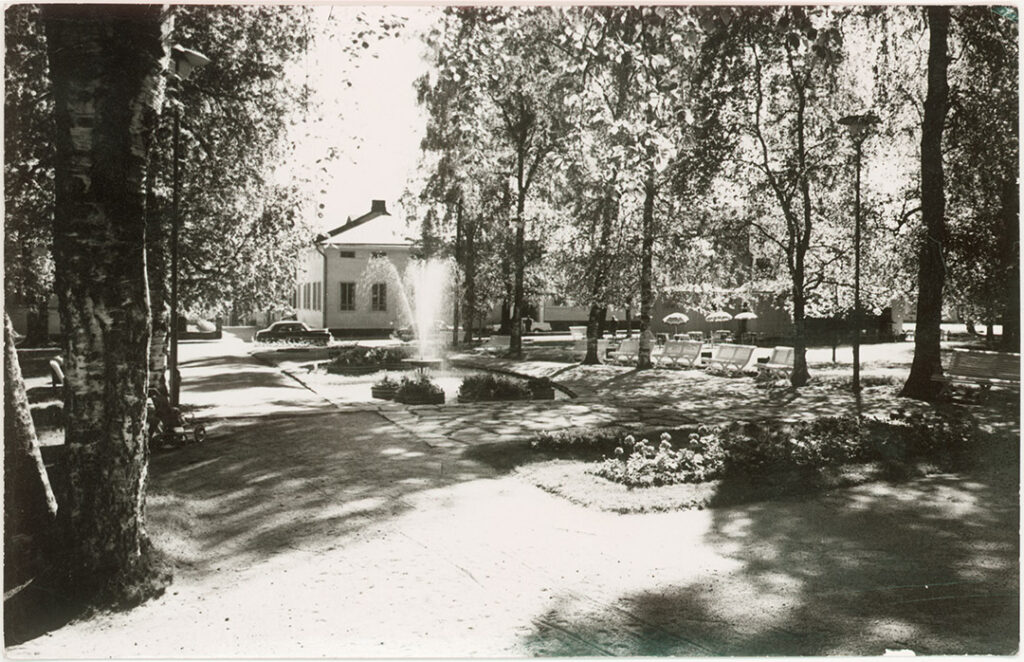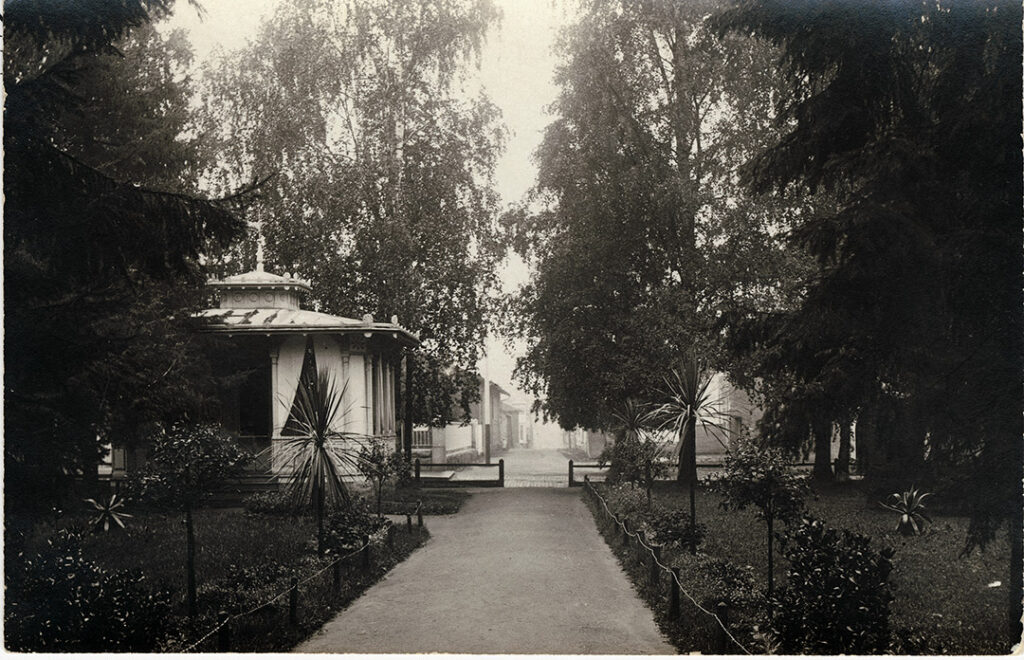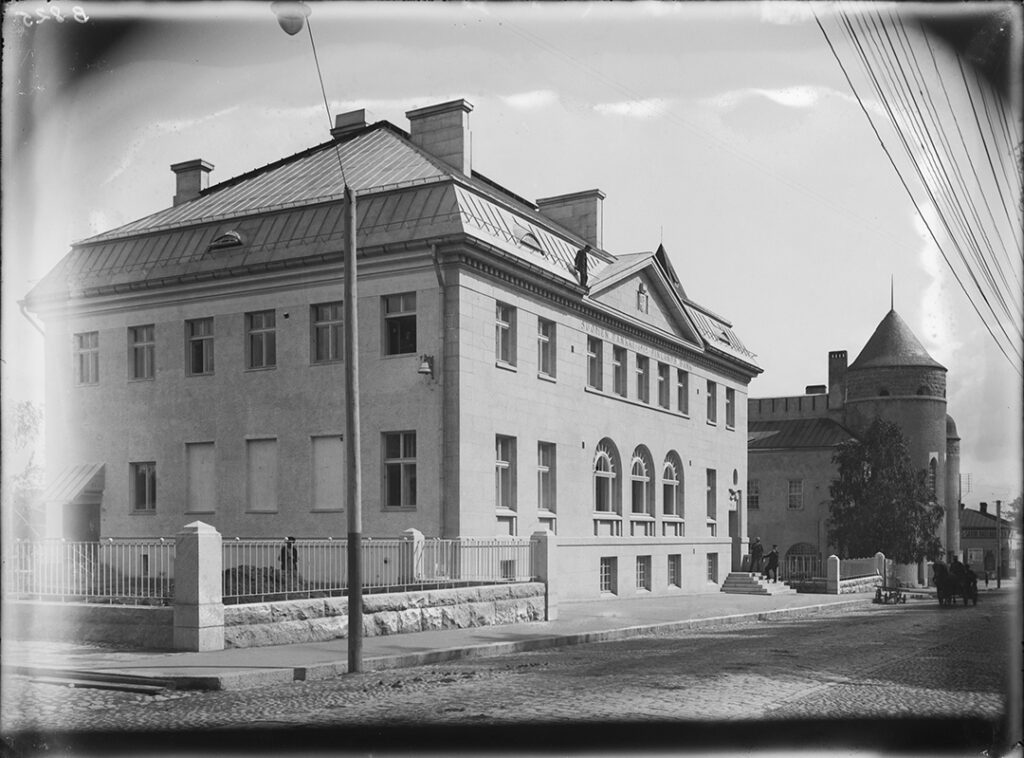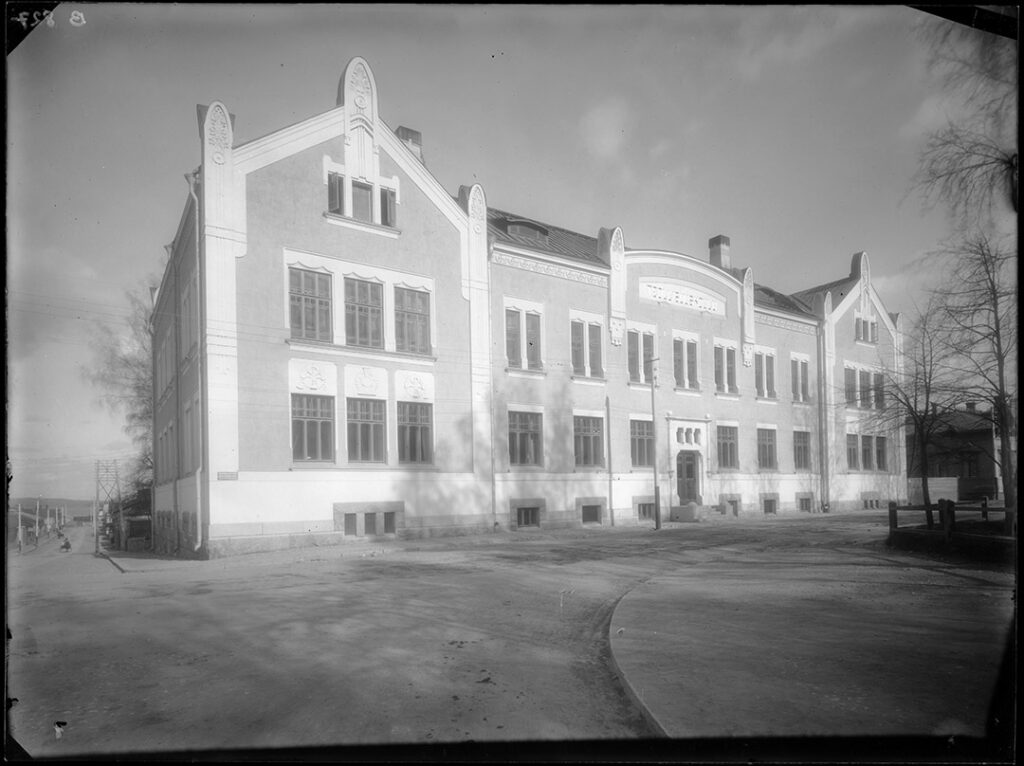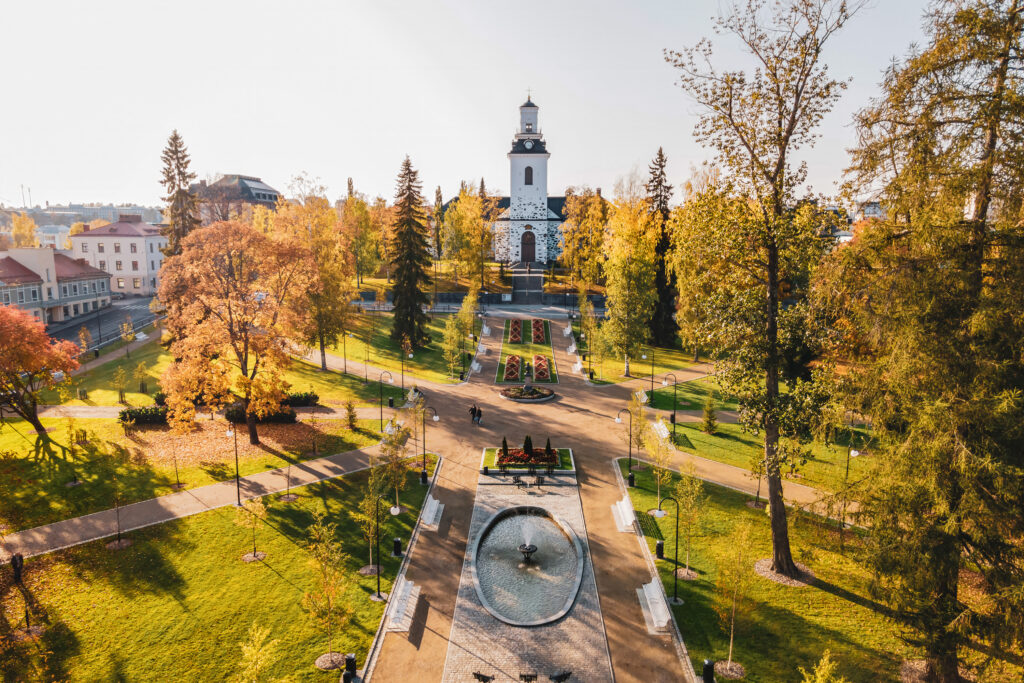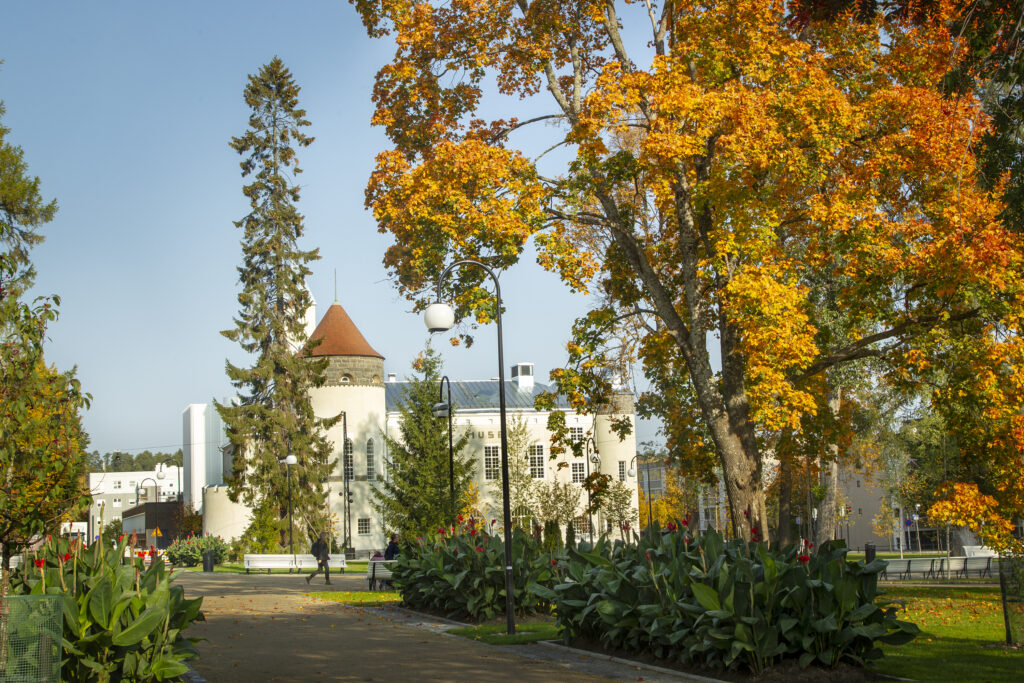Snellmaninpuisto Park
Snellmaninpuisto Park and its surroundings are one of the most significant key areas in the city’s history. It was known as the city’s main market square, called Kustaantori, Suurtori and Kirkkotori. In addition to market activities, the area was also home to residences of civil servants and wealthy Kuopio residents and the vault of the county government’s fund Ränteri.
The transformation from the market square to a park began in the 1850s, when the first plantings were made and the market moved to its current location. Snellmaninpuisto Park was named after Johan Vilhelm Snellman, who was influential in Kuopio in the 1840s, whose monument was unveiled in 1886. The park was once an important venue with summer concerts and music pavilions. In winter, the area was enlivened by the slide located in the park’s corner, on Minna Canth Street’s side.
The green and blooming heart of the city
Snellmaninpuisto Park is the oldest park in Kuopio and the green heart of the city, which contains several tree species. The first trees planted in the park were aspens, which have since been replaced by e.g. iron birches, maples, red ash and oaks, the oldest of which are almost 100 years old. In spring, the park has lovely ornamental apple trees with white and red flowers, and in summer, large rhombus-patterned flower plantings and a fountain from the 1950s.
The park underwent a major renovation in 2019–2020, during which e.g. park corridors, lighting, and vegetation were renewed. The beautiful park area located in a central location is an important place for citizens to spend time and pass through.
A concentration of valuable historic buildings
In the surroundings of Snellmaninpuisto Park stands several buildings related to the development and growth of Kuopio, such as Kuopio’s famous Lutheran Cathedral, former Bank of Finland, Kuopio Museum, Snellman Primary School, and Minna Canth’s residential and commercial building Kanttila.
- Kuopio Lutheran Cathedral (1816, P.W. Palmroth) was Kuopio’s fifth church and the first public stone building at the time of its construction. The neoclassical church located on Vahtivuorenmäki Hill dominated the cityscape as seen from both Kallavesi Lake and Puijo Hill. The church was reached by boat in summertime and in winter by sledge along the ice. In honour of the 200th anniversary, the church was renovated in 2015, when its interior and exterior walls were renovated and the trees in the church yard were renewed.
- Former Bank of Finland (1912, J.V. Strömberg) resembles a classical palace building by its style. The originally two-story building was raised with a residential floor in 1947. The Bank of Finland operated in the building until 1993, and since 1998 it has been used by the restaurant Isä Camillo.
- Kuopio Museum (1907, J.V. Strömberg) is the third oldest museum building in Finland. In addition to the facades, its art nouveau features can be seen especially in the former entrance hall and the main staircase. The building originally housed a history-ethnological and natural history museum, a public library with reading rooms, and the fire equipment of the volunteer fire department. The museum’s operations and facilities have experienced several changes over the years. Most recently, between 2018 and 2021, it was renovated and expanded, which combined it with the Kuopio City Library into a single entity called Kantti.
- Snellman Primary School (1904, Werner Polón) was formerly a wooden building known as the folk mansion. At one time, J.V. Snellman was a teacher at the upper elementary school that operated there. Later, school of science and an industrial school operated in the same building. An octagonal building, ‘’Mutteri’’ (1850, E. B. Lohrmann), which served as a gymnasium for the upper elementary school, has been preserved from the days of the wooden building in the courtyard. The wooden building was demolished, and the current stone building designed for an industrial school was completed in 1904. The school was later called the Kuopio Technical School, and it operated in the building until 1966. After this, Vahtivuori National School moved into the building, later Snellman Primary School. The school building was damaged in the bombings of the Winter War, and during the repair the building was raised by one floor.
